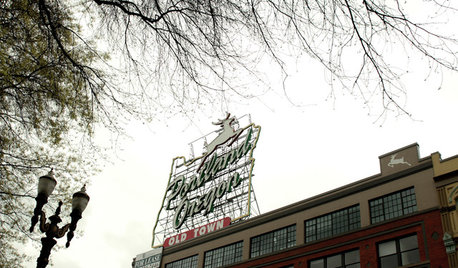is this normal William Shakespeare 2000 growth?
aimeekitty
13 years ago
Related Stories

COLORColor of the Week: Spring Blossom Yellow
Tired of winter yet? Bring on spring with our featured color of the week
Full Story
HOUZZ TOURSHouzz Tour: Artisanal Excellence in a Gracious Montana Ski Lodge
Rustic and rugged meet elegance and hand-crafted quality in this ski-in, ski-out vacation home for a family of 6
Full Story
HEALTHY HOMENontoxic Paint 101
If 'VOC' sounds like gobbledygook and you have no clue what causes that funny smell, check out this primer on ecofriendly paint types
Full Story
KITCHEN DESIGNKitchen Sinks: Stainless Steel Shines for Affordability and Strength
Look to a stainless steel sink for durability and sleek aesthetics at a budget-minded price
Full Story
BATHROOM MAKEOVERSHouzz Call: Tell Us About Your Bathroom Remodel!
Did you recently redo your bath? Please tell us about your upgrade and what it took to get there
Full Story
BATHROOM WORKBOOK5 Ways With a 5-by-8-Foot Bathroom
Look to these bathroom makeovers to learn about budgets, special features, splurges, bargains and more
Full Story
FARM YOUR YARD9 Ways to Change Up Your Vegetable Garden for the Coming Season
Try something new for edible plantings that are more productive than ever
Full Story
HOMES AROUND THE WORLDWorld of Design: 11 Book Lovers and Where They Like to Read
Bibliophiles across the globe reveal their top books and favorite reading spots, from a 2-story library to an artfully curated book nook
Full Story
GARDENING AND LANDSCAPINGWorld of Design: 10 Treehouses to Send Your Spirits Soaring
Join us on an international tour of homes built among the branches (or inspired by them) to delight kids big and small
Full Story
CITY GUIDESTravel Guide: Portland, Oregon, for Design Lovers
Get a dose of Portland's one-of-a-kind quirkiness through its outdoor artwork, eclectic hotels and engaging architecture
Full StorySponsored
Columbus Area's Luxury Design Build Firm | 17x Best of Houzz Winner!







aimeekittyOriginal Author
kstrong
Related Discussions
William Shakespeare 2000
Q
Advice about spindly William Shakespeare 2000
Q
Falstaff Vs. William Shakespear 2000
Q
OT William Shakespear 2000
Q
lavender_lass
michaelg
aimeekittyOriginal Author
michaelg
aimeekittyOriginal Author
hoovb zone 9 sunset 23
lagomorphmom
harryshoe zone6 eastern Pennsylvania
lavender_lass
greybird
aimeekittyOriginal Author
berndoodle
aimeekittyOriginal Author
monarda_gw
jerijen
elemire
carolinamary
flaurabunda
carolinamary
flaurabunda
aimeekittyOriginal Author